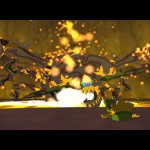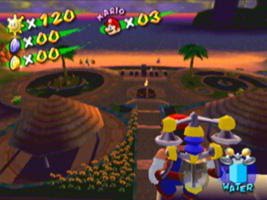HD screenshots of Metroid Prime, Wind Waker, Sin and Punishment 2, Baldur’s Gate, Killer 7
Posted on 15 years ago by Brian(@NE_Brian) in GameCube, Screenshots, Wii | 1 Comment
HD screenshots of F-Zero GX, Resident Evil Remake
Posted on 15 years ago by Brian(@NE_Brian) in GameCube, News, Wii | 0 comments
HD screenshots of The Legend of Zelda: The Wind Waker and Klonoa: Door to Phantomile (Dolphin)
Posted on 15 years ago by Brian(@NE_Brian) in GameCube, News, Wii | 5 Comments
HD screenshots of Wind Waker, Resident Evil: Umbrella Chronicles, Sonic & SEGA All-Stars Racing (Dolphin)
Posted on 15 years ago by Brian(@NE_Brian) in GameCube, News, Wii | 2 Comments
HD screenshots of Wind Waker, Wii Play, Shattered Memories, Twilight Princess, Link’s Crossbow Training, Wii Sports, No More Heroes, Zack & Wiki HD (Dolphin)
Posted on 15 years ago by Brian(@NE_Brian) in GameCube, News, Wii | 6 Comments
The Legend of Zelda: The Wind Waker 1080p screenshots
Posted on 15 years ago by Brian(@NE_Brian) in GameCube, News | 3 Comments
Sakamoto: A lot of character devlopment for Samus in Other M, no Metroid Prime reboot planned
Posted on 15 years ago by Brian(@NE_Brian) in GameCube, News, Wii | 4 Comments
The following information comes from Yoshio Sakamoto, the co-creator of Metroid…
“You are going to see a lot further development all of which is connected to this progression you see in the Samus character in the past. So you get to learn what kind of person she is and how she is connected to the events in her past and how they have made her the person she is in the present moment. You saw in the original Metroid series titles and then through Prime there were different glimpses of the Samus character. But this is our best opportunity to date to present everything all together about Samus, to give the definitive character sketch and that is going to be something people can draw from as a resource as we pull them into the Metroid universe in the future as well.”
“I didn’t have a lot of input on the Prime series, I still don’t know much about the future of the Prime series as well, I haven’t been involved in that either. As to whether our Samus is going to be used in the Prime series going forward. You really have to defer to the wishes of the creator in this regard. Maybe think of it as the same universe but a different world view. There are different emphases in the two series of games. The Samus that we present here is very much our own, but the creators of the Prime series might have different goals and different areas that they want to stress as they go forward. Of course in these two series the approach is a little bit different and that is something essentially unavoidable. Samus is a character that fights and she has a lot of deep backstory and a lot of emotional content. That is what is essential here.”
“I can’t say what will happen in the future with Prime but I can say there is no reboot planned as such. You just need to keep in mind that different creators, different producers have slightly different visions and the end product will differ slightly as a result.”
Even though I’m looking forward to Other M, I’d be disappointed if we never saw another Metroid Prime game. The Prime titles have such an incredible atmosphere and manage to capture the spirit of Metroid very well.
GameCube menu music is actually Famicom disc system BIOS music when sped up
Posted on 15 years ago by Brian(@NE_Brian) in GameCube, News | 467 Comments
Remember that Super Mario Sunshine nugget we posted yesterday? Well, here’s another hidden Nintendo secret for you.
Take a listen to the GameCube’s menu music:
Nothing seems to be too exciting about that, right? Well, let’s speed up the music by about twenty-five times…
Believe it or not, that music is actually the same song found on the Famicom disc system BIOS startup screen. Pretty neat, don’t you think?
Area in Super Mario Sunshine level disguised as a GameCube controller
Posted on 15 years ago by Brian(@NE_Brian) in GameCube, News | 14 Comments
This is a neat little nugget from Super Mario Sunshine. In the Sirena Beach, a portion of the level may remind you of something…
If you’re still not sure what exactly you’re looking at, perhaps this will help. It’s the same image, but it has been flipped and reversed…
Yup, that’s right. That area in Sirena Beach is actually a GameCube controller! You can clearly see all of the buttons from the controller are there, as well as what would be the d-pad and analog sticks. I never realized that while playing. What about you guys?
Nintendo Power’s top 10 games of the decade
Posted on 15 years ago by Brian(@NE_Brian) in DS, GameCube, GBA, News, Wii | 5 Comments
1. Super Mario Galaxy
2. Resident Evil 4
3. The Legend of Zelda: Twilight Princess
4. The Legend of Zelda: The Wind Waker
5. Super Smash Bros Brawl
6. Metroid Prime
7. Elite Beat Agents
8. Metroid: Zero Mission
9. Mario Kart Wii
10. The World Ends With You
























